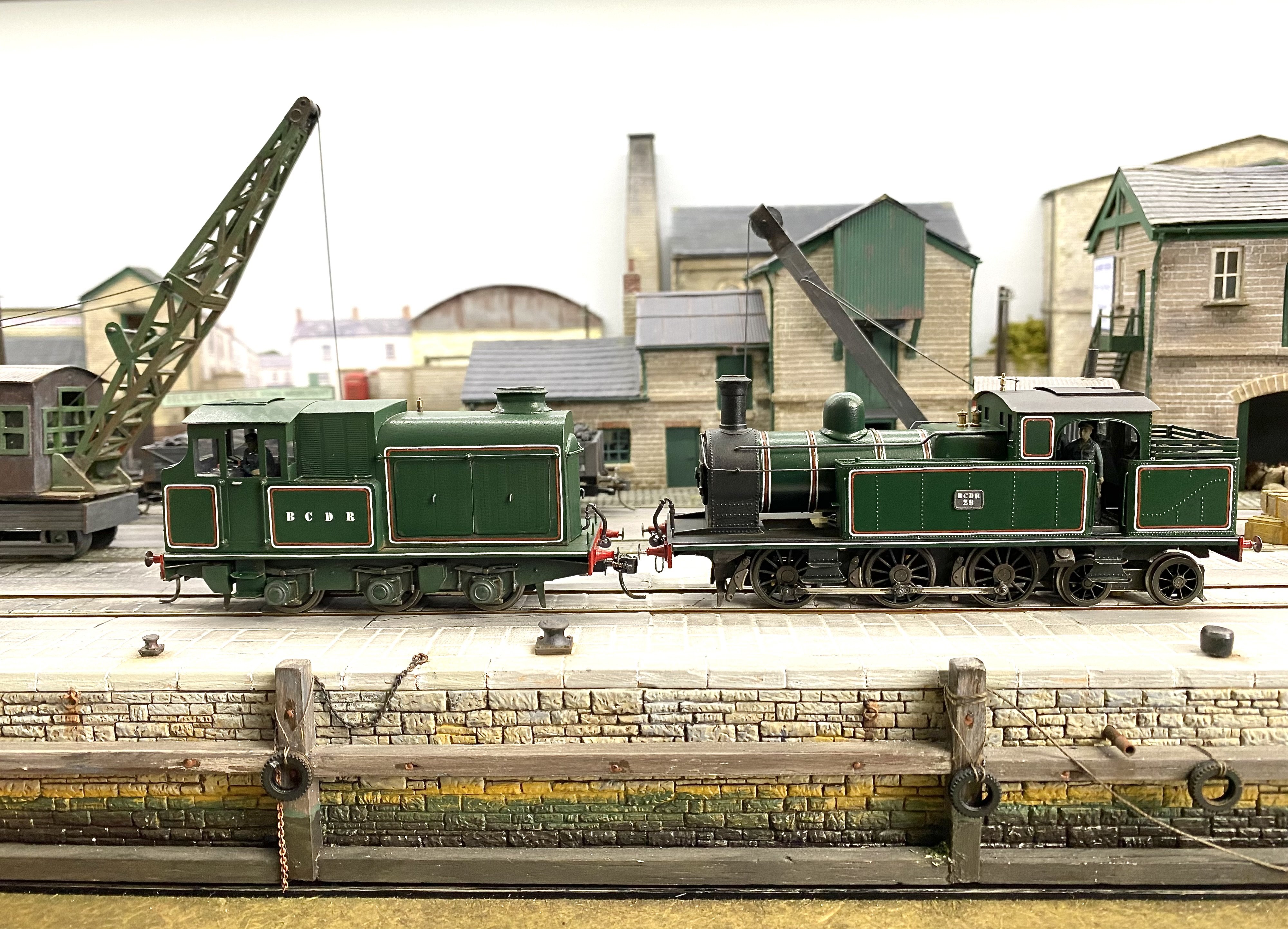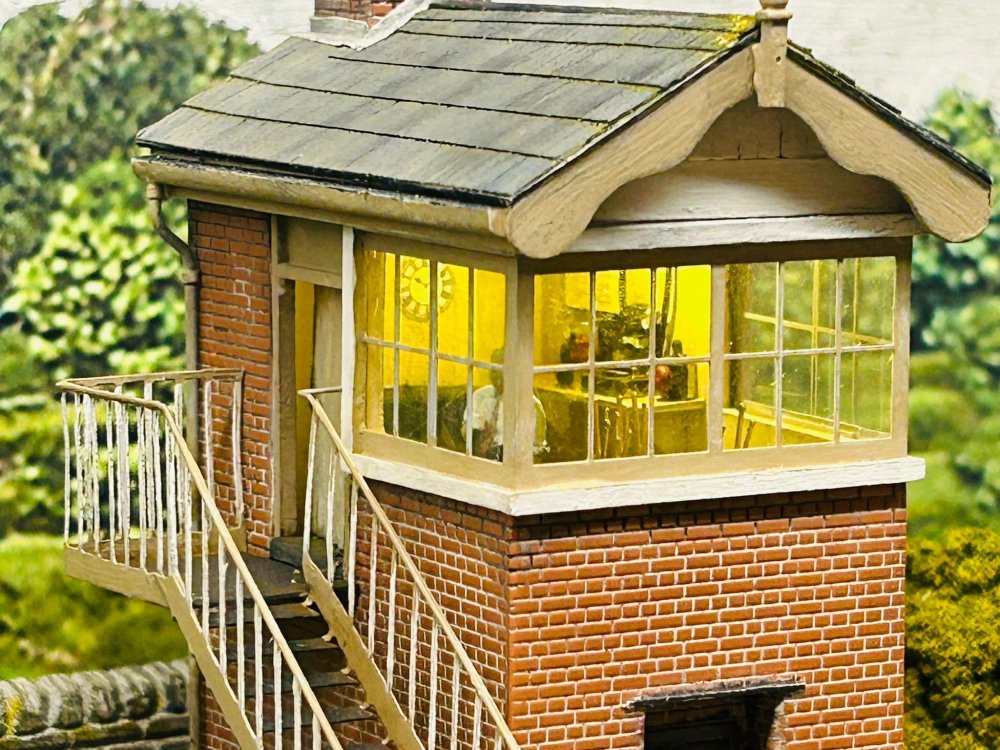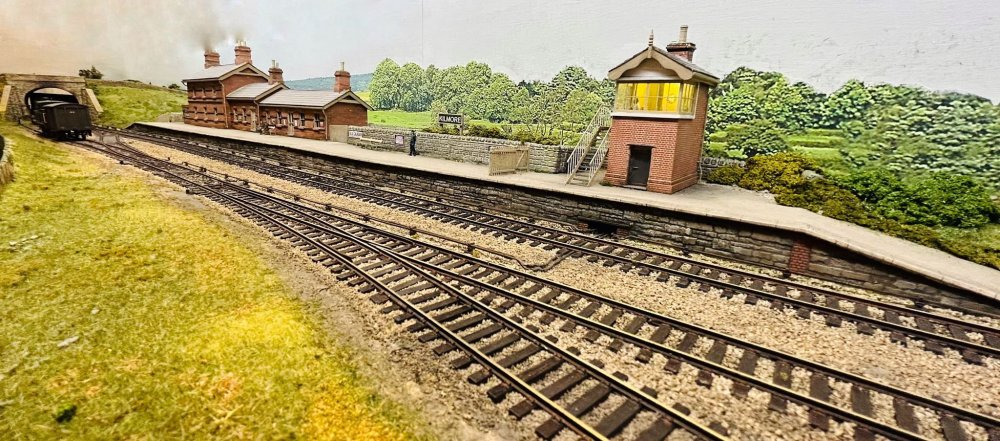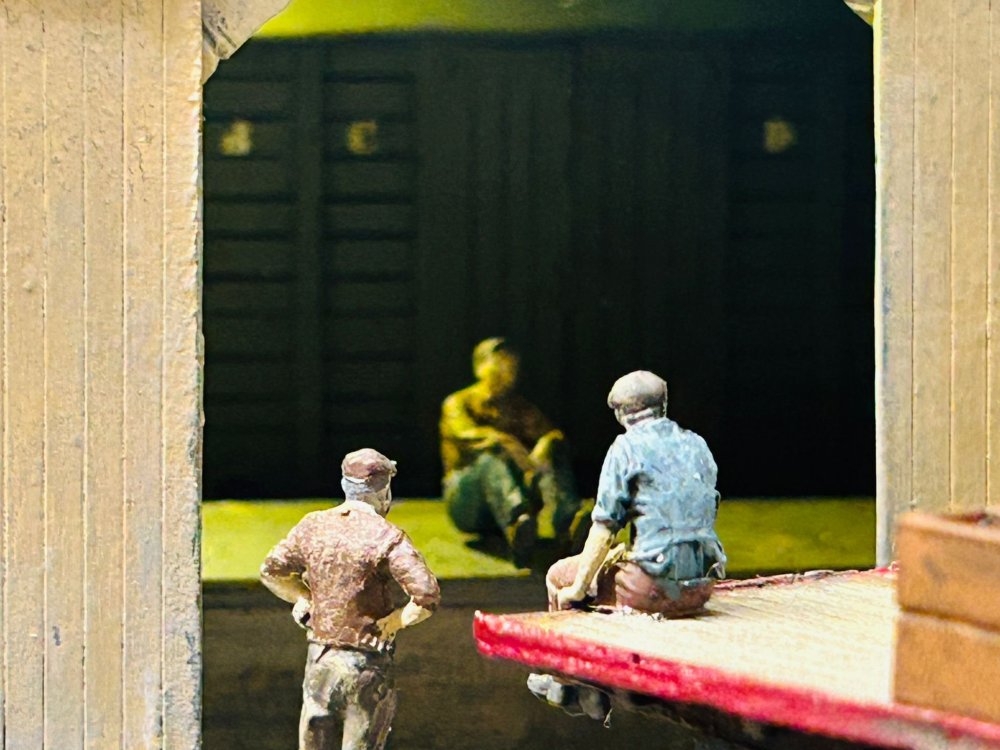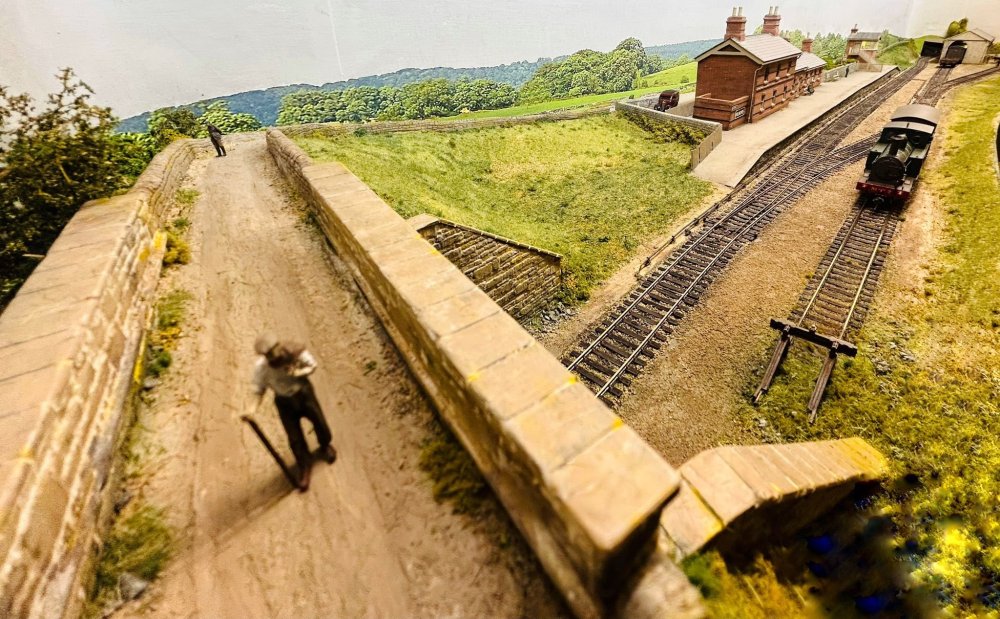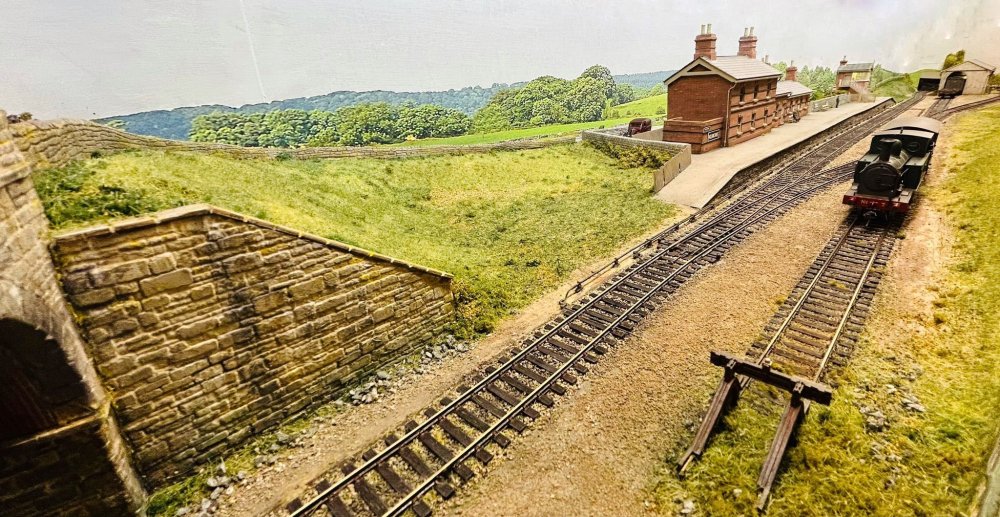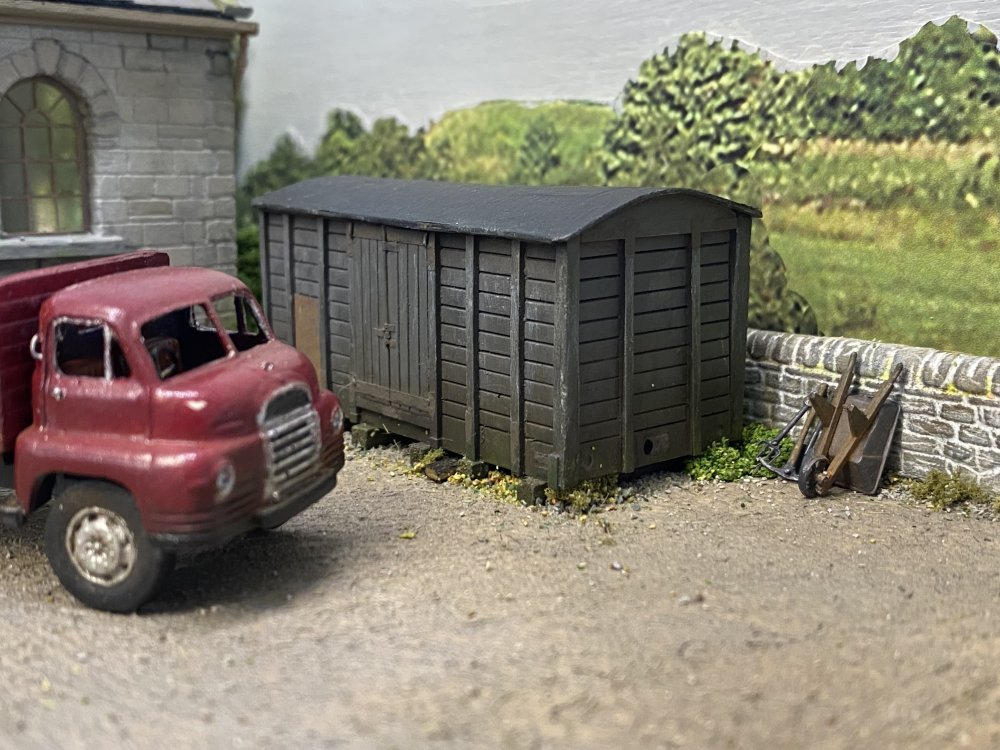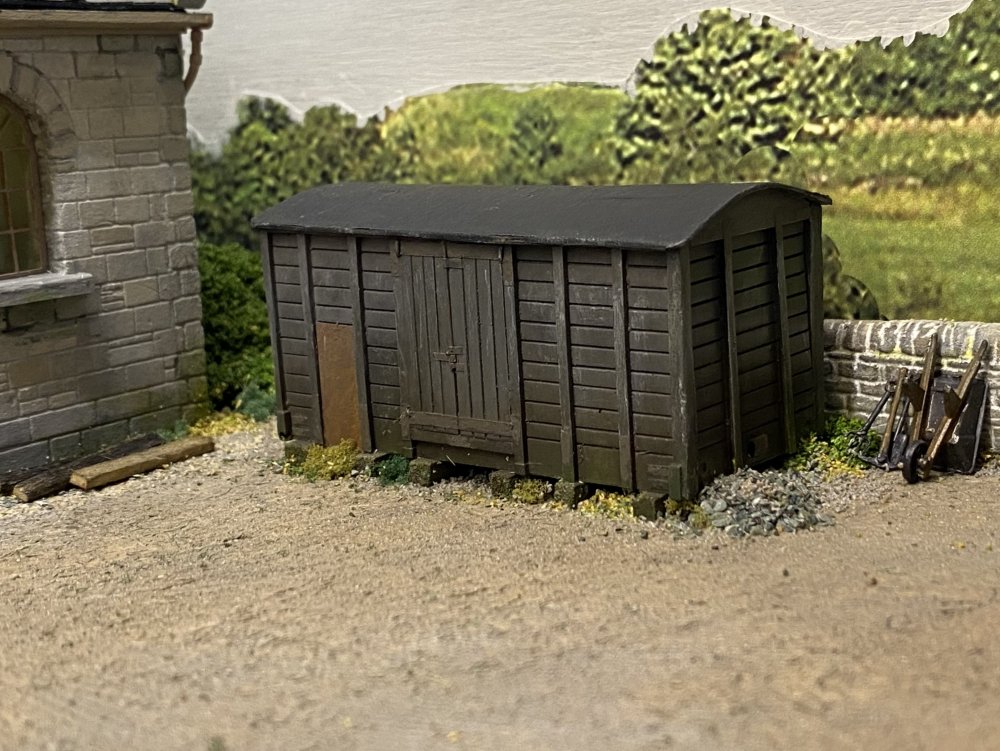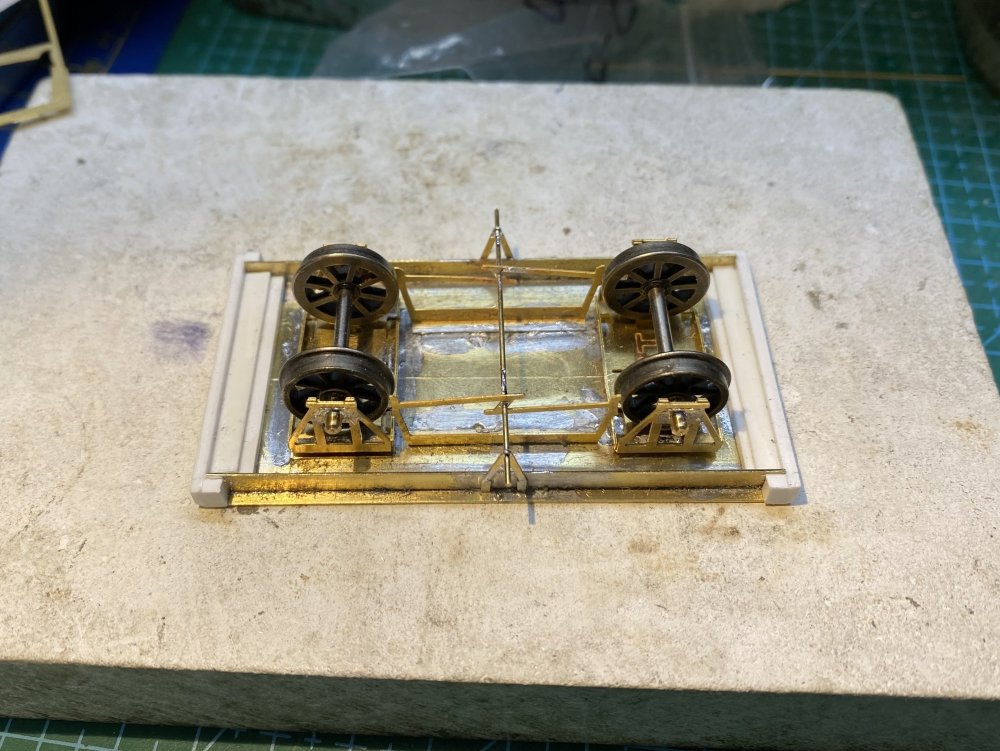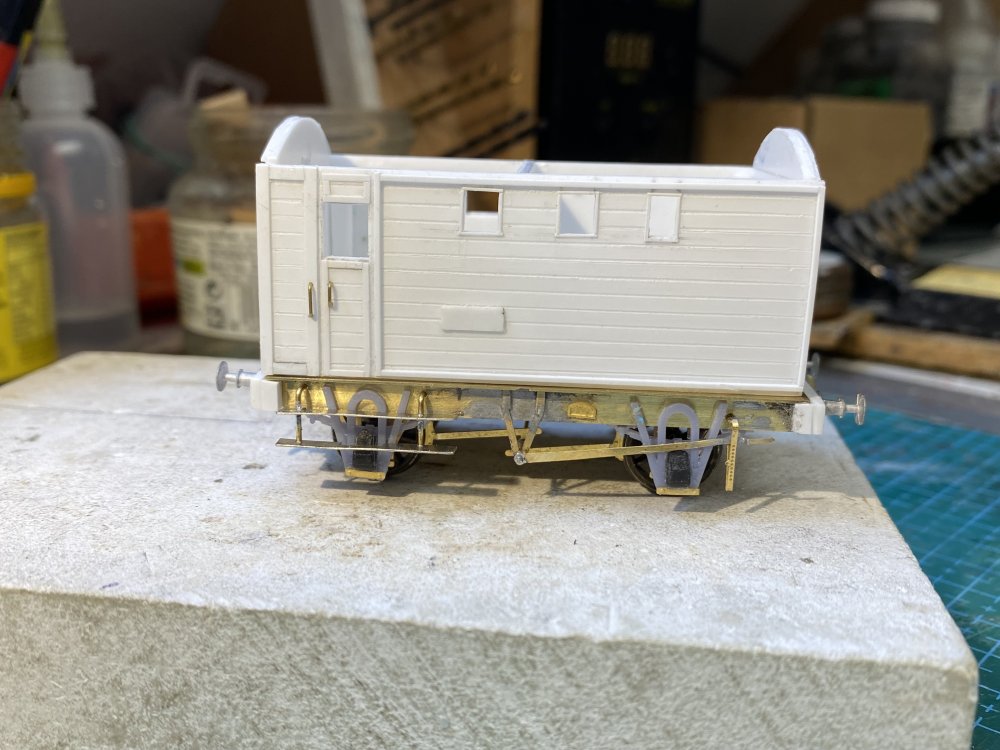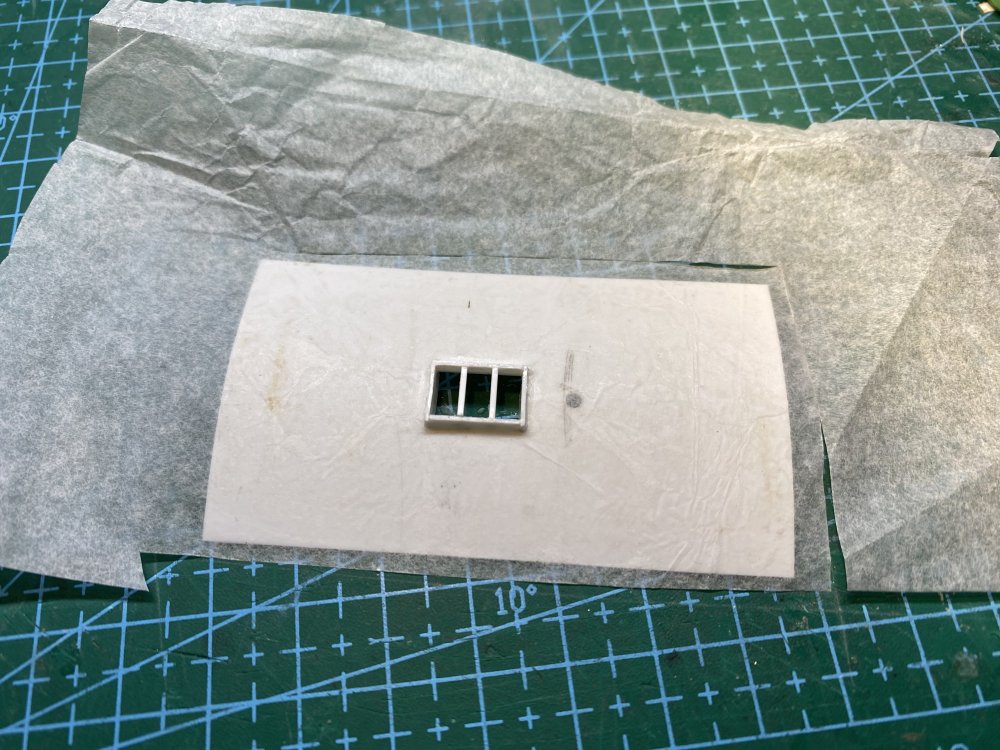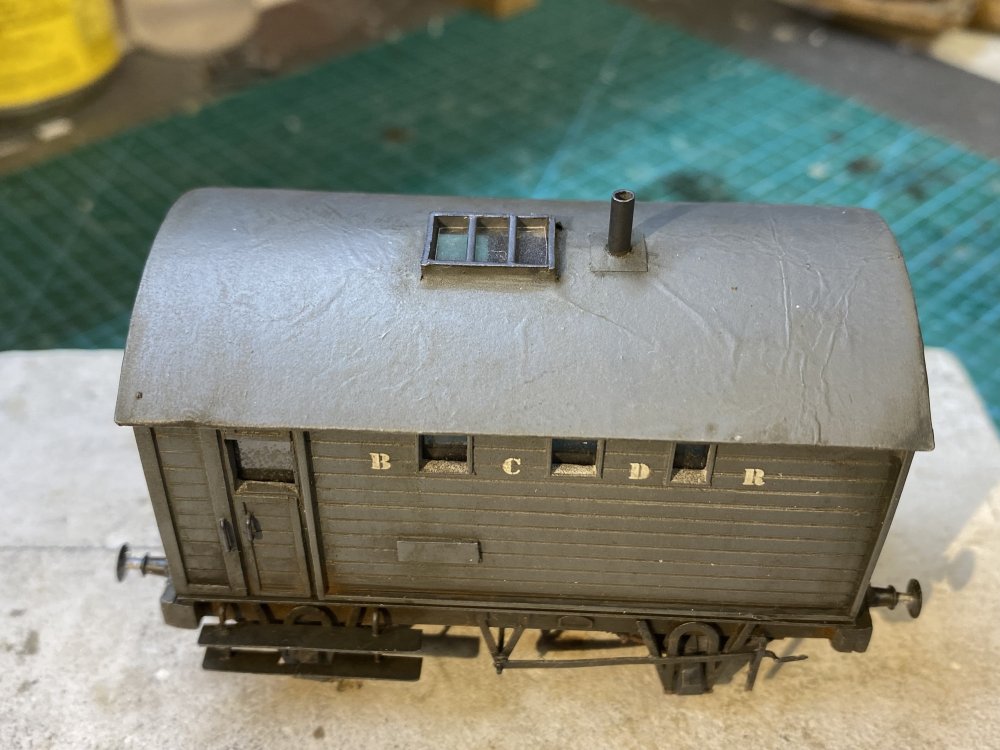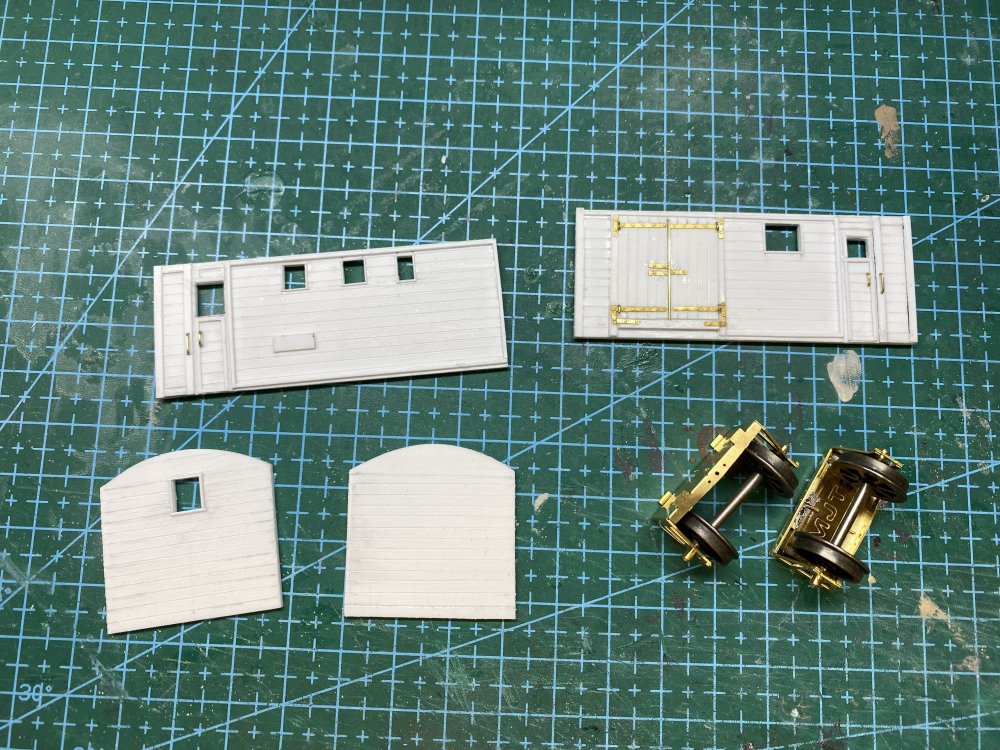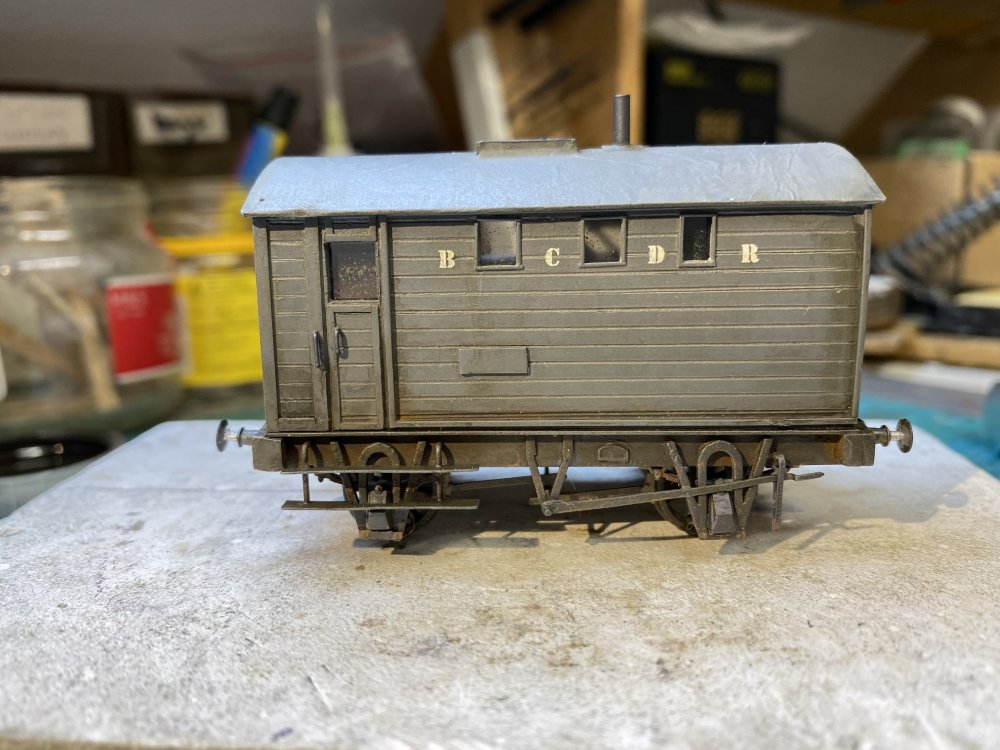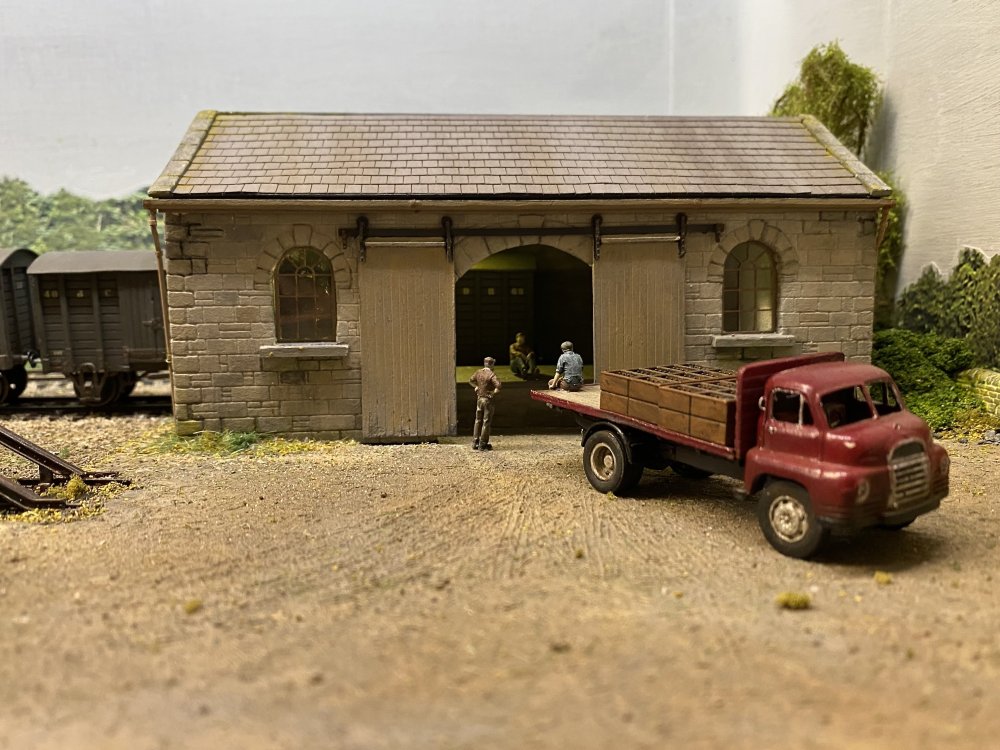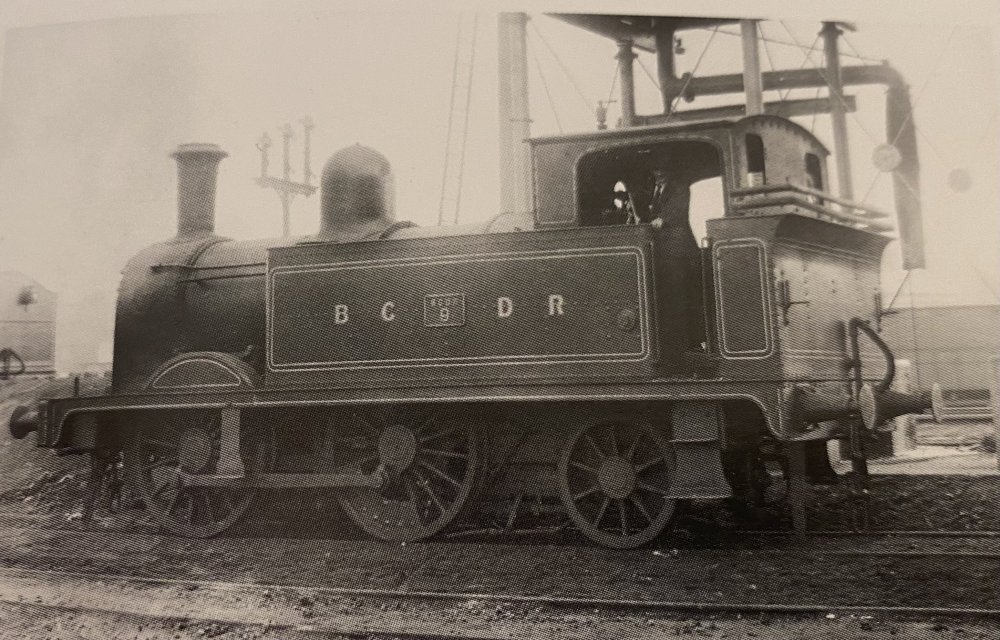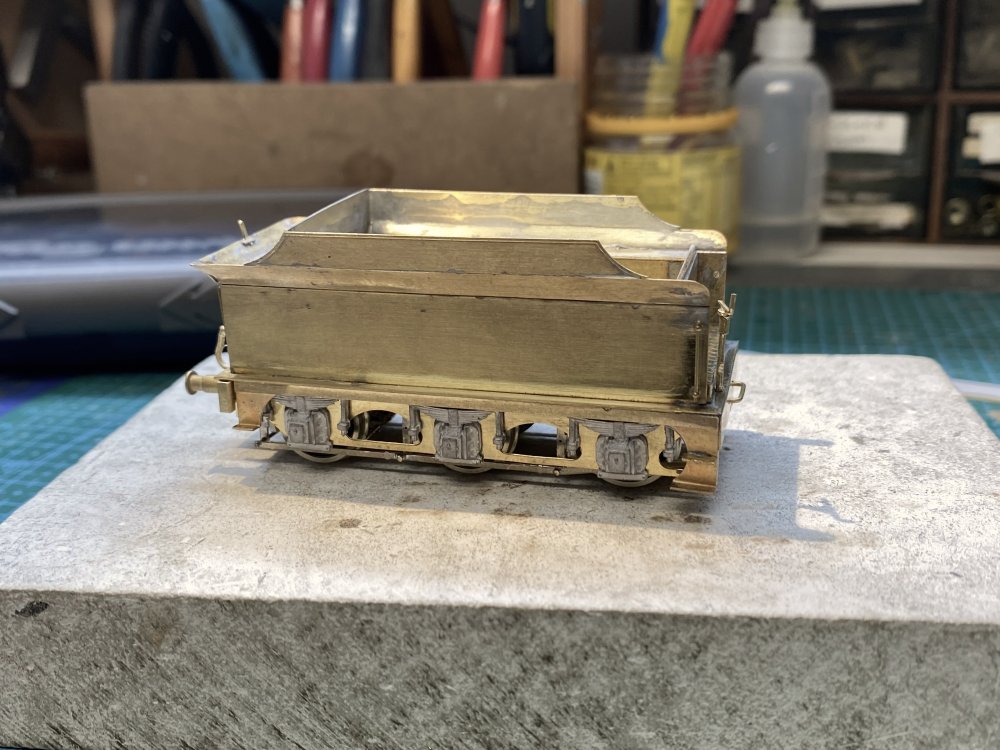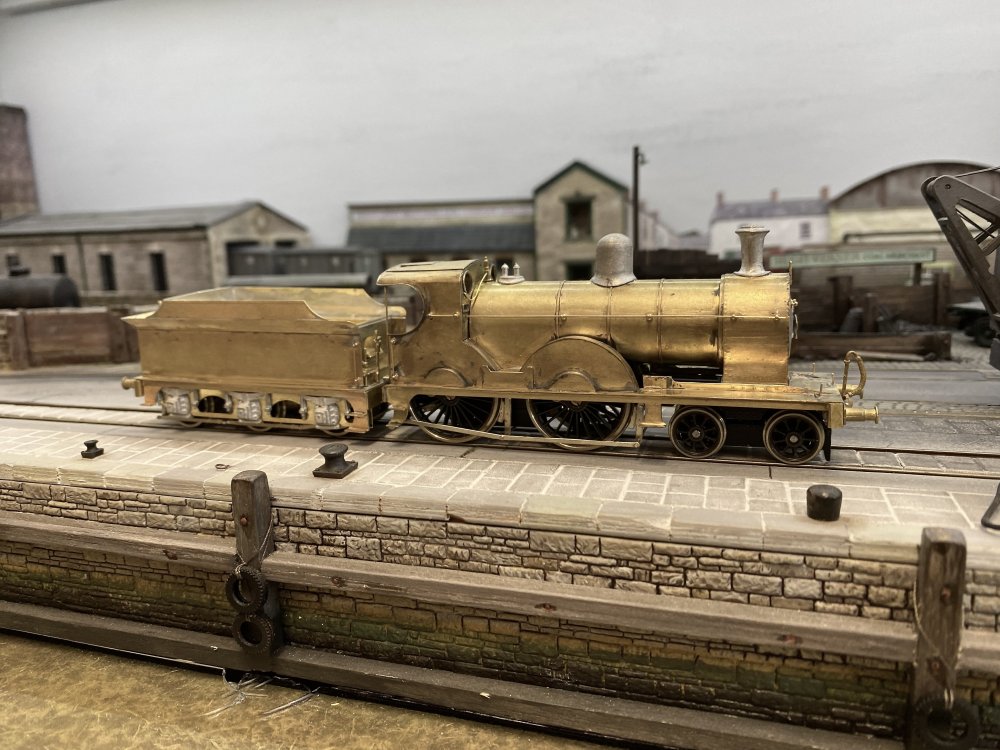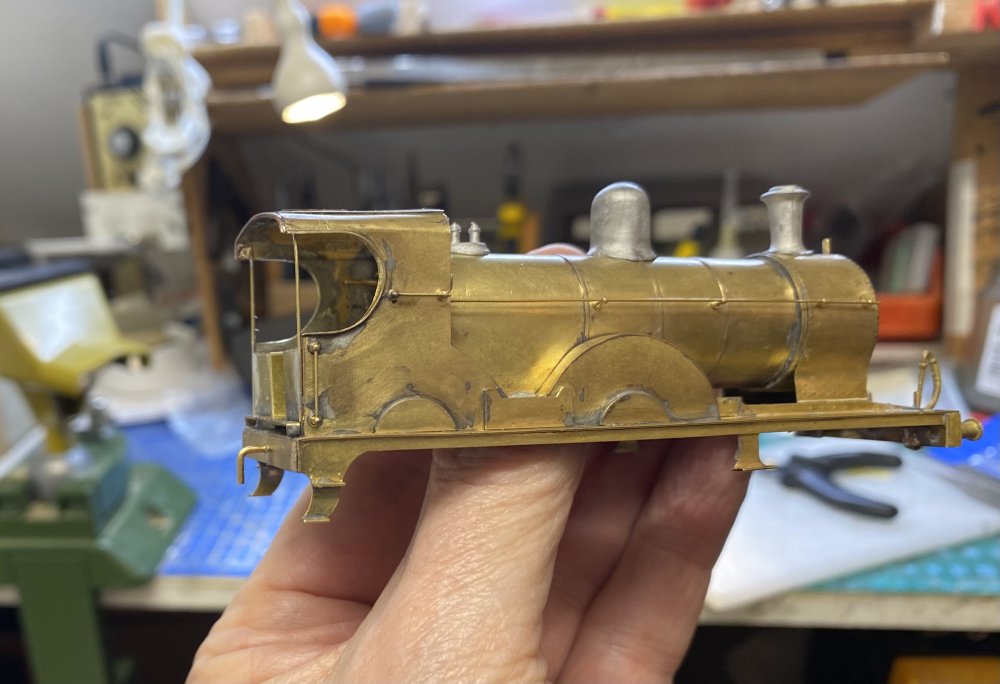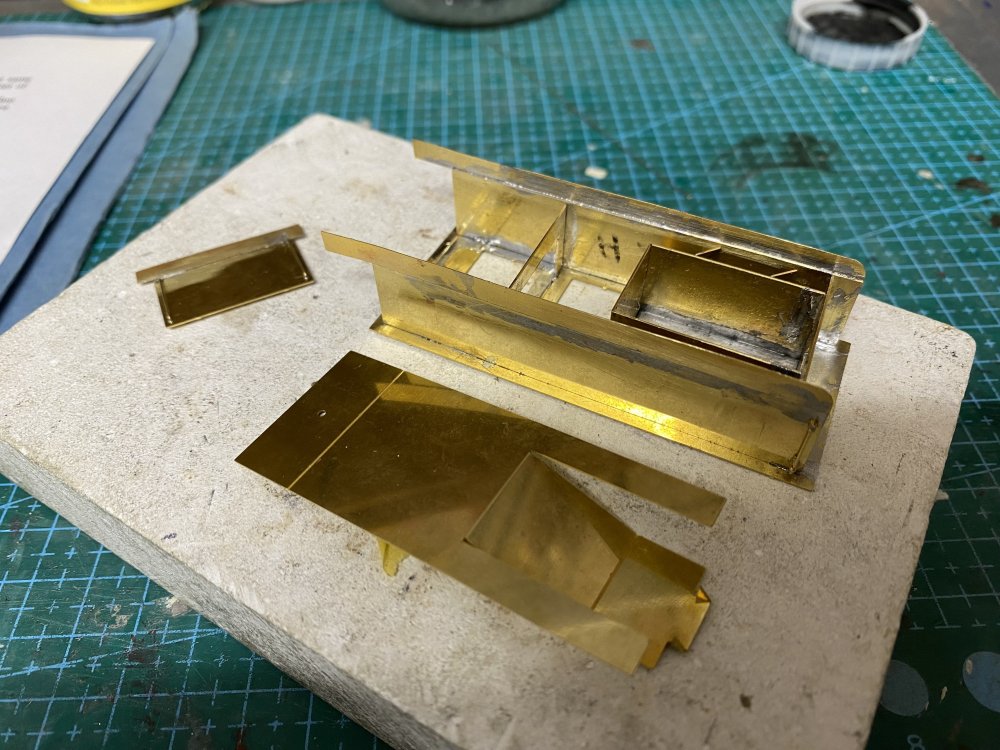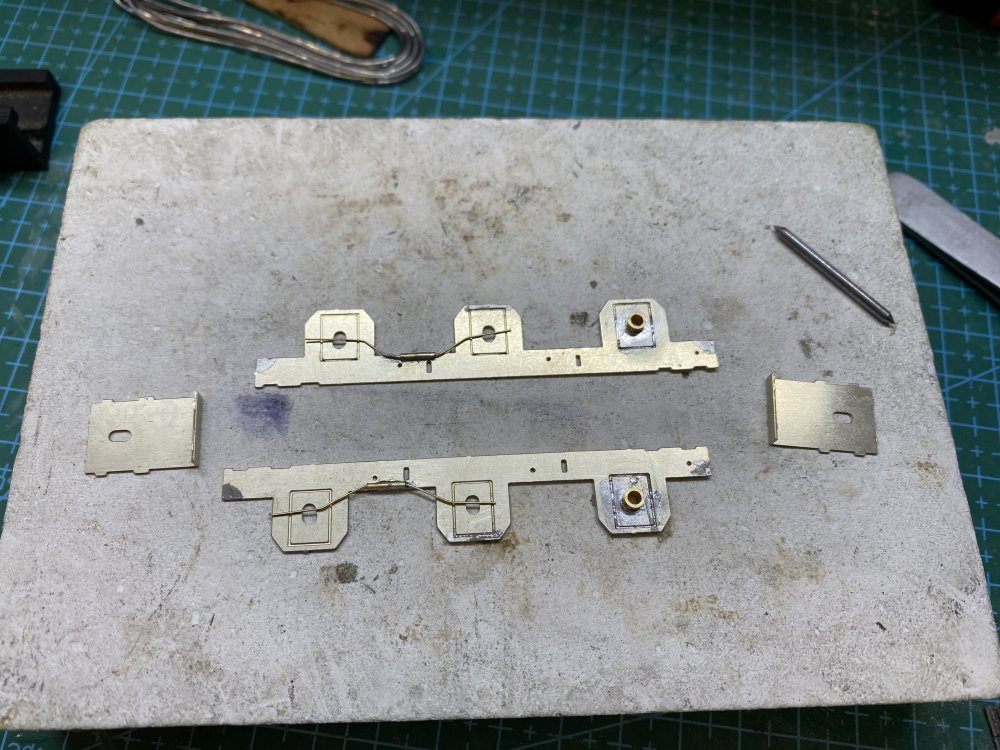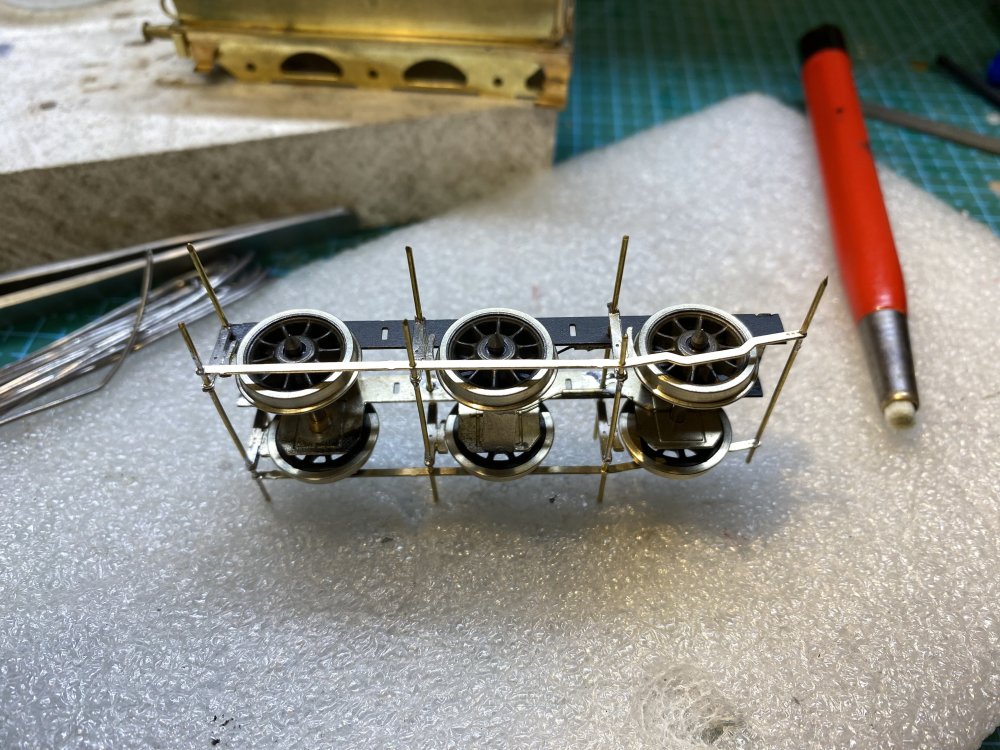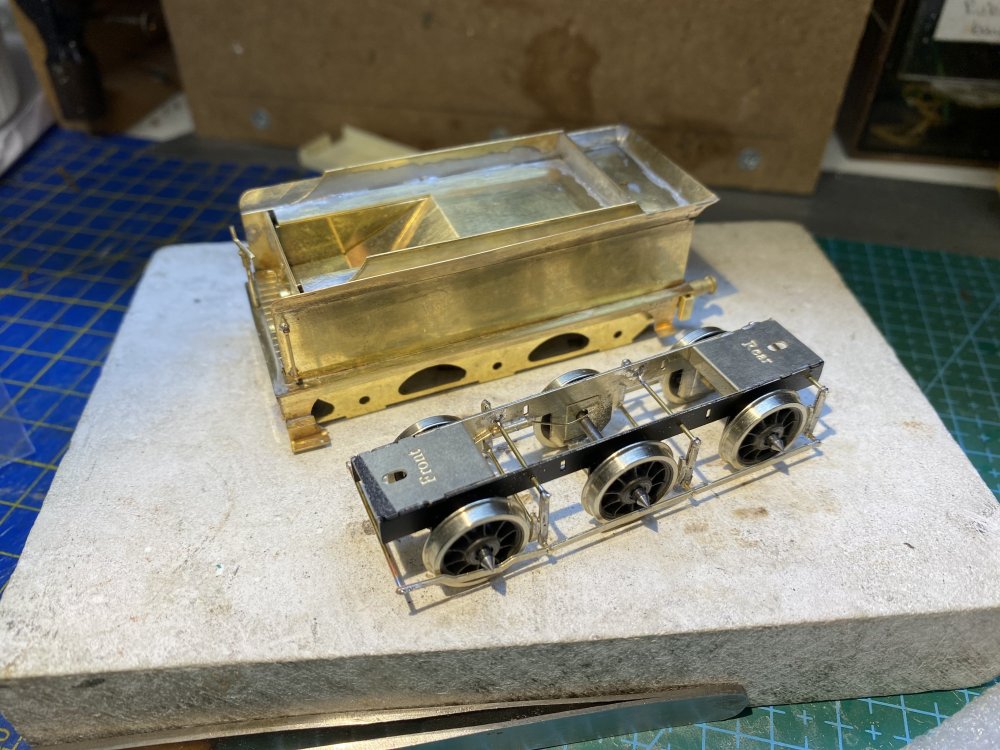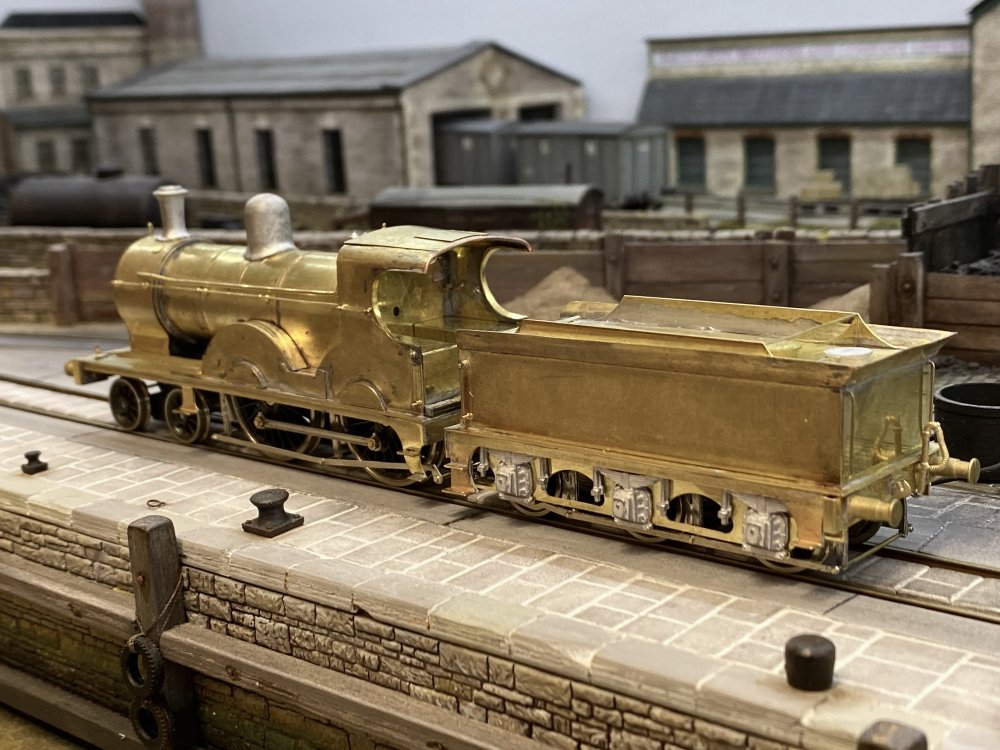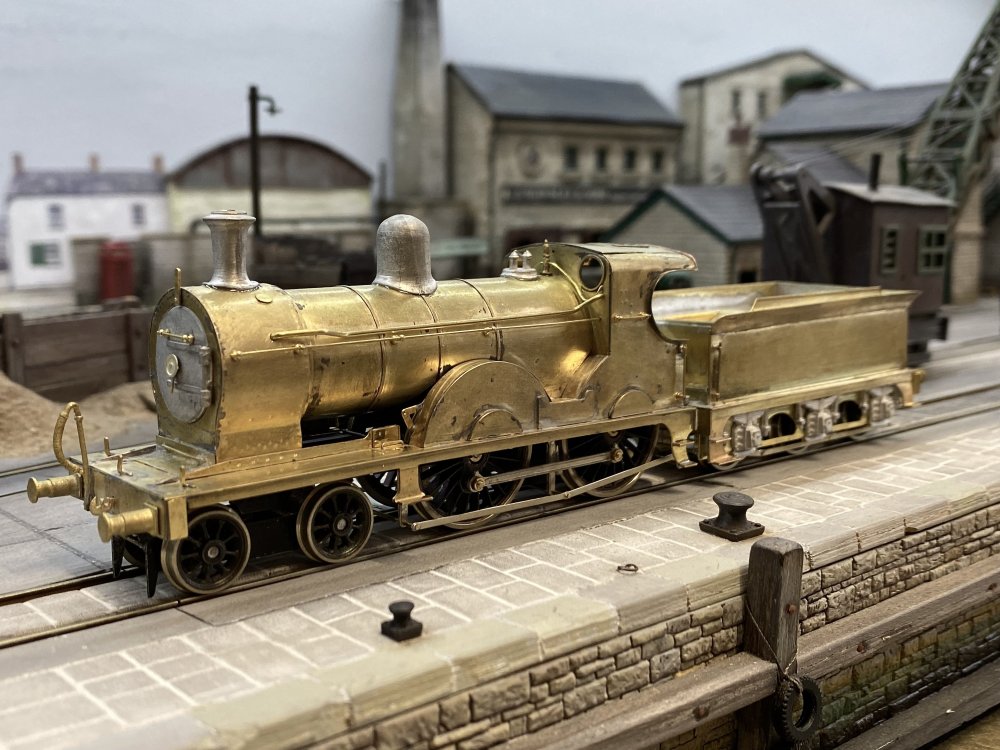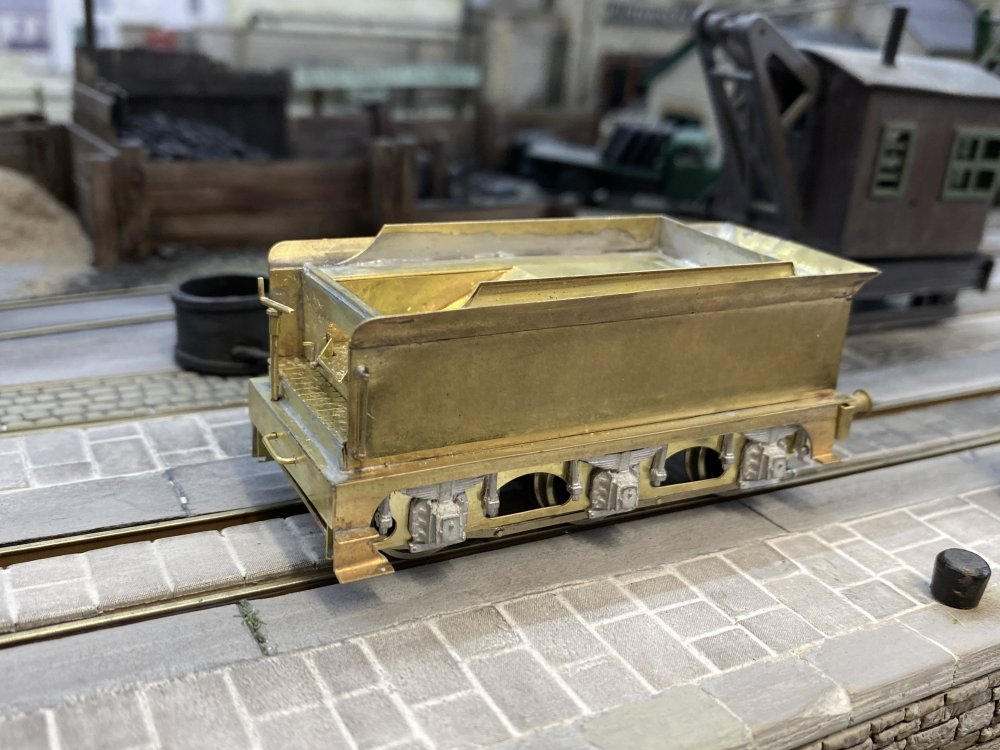-
Posts
957 -
Joined
-
Last visited
-
Days Won
56
Content Type
Profiles
Forums
Events
Gallery
Everything posted by Tullygrainey
-
KiIlmore's official photographer @Patrick Davey came by the other day and tried out his new wide angle lens. It was a cold day and the stationmaster has just lit fires in all the grates. In other news, a grounded van has appeared in the goods yard.
- 121 replies
-
- 19
-

-

-
Subtle weathering but convincingly grubby. Those are perfect Patrick.
-
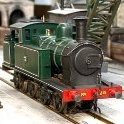
"Voiding the Warranty" - Mol's experiments in 21mm gauge
Tullygrainey replied to Mol_PMB's topic in Irish Models
That is really delicate work Paul and as far as I can see, you're making a great job of it, modifications included. The soldering looks fine to me! Good luck with the rest of the build. I'll watch this one with interest. -
A wagon for Kilmore. This is the Weighbridge Fitters' van, apparently a one-off with no number. Desmond Coakham speculated that it was built on the chassis of a ballast brake ordered to be broken up in 1908. I used plasticard for the body with some brass strapping from an Alan Gibson etch. The sides apparently differed from one another but the two photos I was able to find were both of the same side so I guessed the layout of the hidden side based on the description in Desmond Coakhams' book. (The Belfast and County Down Railway, Colourpoint, 2010) The chassis uses an MJT compensation etch to create one fixed and one rocking axle mounted on a brass floor. These will do the work of carrying the wheels behind the scene. Brake details came variously from Gibson and Brassmasters wagon chassis etches. All of this then hides behind the outside W irons typical of BCDR rolling stock. They are cosmetic in this model and are superglued to the sole bars. Along with spring units, they are pre-production 3D printed items from Enda Byrne (ckprints.ie) which I got the opportunity to try out (many thanks to Gareth Brennan, Kieran Lagan and Enda for moving this along). They're finely printed and suit this project well. I used tissue paper to texture the roof, flooding it with liquid poly to bond it to the plastic card. The skylight is also a guesstimate since the available photos don't show it well. Next, paint, transfers and weathering. Some couplings, then it's just about ready to go. There are a number of errors (should have a window in each end for one thing) which I'm not going to lose sleep over.
-
Ah… I’d been wondering who this new bloke Colonel was
-
- 121 replies
-
- 16
-

-

-

"Voiding the Warranty" - Mol's experiments in 21mm gauge
Tullygrainey replied to Mol_PMB's topic in Irish Models
Excellent! I really like that last photo. A real sense of being in the landscape, standing lineside. -

"Voiding the Warranty" - Mol's experiments in 21mm gauge
Tullygrainey replied to Mol_PMB's topic in Irish Models
That's all coming together nicely. -

Gauge of interest: Alphagraphix 4mm Irish kits
Tullygrainey replied to GSR 800's topic in Irish Models
or Northern Ireland -

"Voiding the Warranty" - Mol's experiments in 21mm gauge
Tullygrainey replied to Mol_PMB's topic in Irish Models
I've used combinations of warm and cool white LED strips to good effect. Made by Lepro, they're supplied on rolls of 5 metre self adhesive strips complete with transformer and dimmer. They can be cut to length. I got mine from Amazon. -

Gauge of interest: Alphagraphix 4mm Irish kits
Tullygrainey replied to GSR 800's topic in Irish Models
We explored this once before but I think because our collective interests are so diverse, we didn't manage to get the numbers for any one thing. Worth another go though. -
What a little beauty!
- 37 replies
-
- 1
-

-
- o gauge layout
- irish outline
- (and 2 more)
-
Yep that's the one David. Built originally as a tender engine in 1887 but subsequently converted to a tank engine. Marked down for scrapping in 1929 but survived derelict until the UTA takeover. Lost its number to a new bogie tank in 1945. (Information from Desmond Coakham's book) I thought it might be interesting to try building a 0-4-2 chassis with drive on the front axle and the other two axles compensated. It ought to be possible to hide a motor/gearbox in the smokebox and boiler. Much the same as my chassis for BCDR No.6, just the other way round.
-
I've been trying to resist that temptation David. Kilmore needs some attention to get it properly operational, I have half finished wagons that need doing and other bits of rolling stock I'd like to have a go at. But then again....
-
Oh, commiserations! My carpet monster has never stolen anything that big.
-
BCDR No.2 went wandering last week, passing through Coleraine before eventually arriving at Ardglass. The passengers were surprised. They thought they were going to Ballynahinch. With thanks to @colmflanagan for this opportunity to exercise No.2 on his excellent Ballycrochan Line. No 2.mov
-
That's got real charm David. Love it. Love the interior detail too. That signalman is really putting his back into it!
-
That's more like the thing. Getting there, by the scenic route. Thanks for the steers gents. Still running on DC at present. Nearly time for it to go back to the fitters at Kirley Junction for paint, chips and some appropriate sounds. PPs sorted.mov
- 645 replies
-
- 10
-

-

-
It's often said that beauty is in the eye of the beholder. So is colour I would say. I've had surgery to one eye (to fix a macular hole) with the result that I have slightly different colour vision in each eye. The operated eye sees things cooler than the other one. So where does that leave me when it comes to assessing colour?
-
Ah... thank you Paul. That makes perfect sense now you point it out. Those bits were vaguely bothering me but clearly not enough to make me read the instruction sheet properly! It does say "upright panels can now be fitted along the top edge of the side flares". As to why Kieran and I both made the same mistake, builder fatigue might have something to do with it. The relevant instruction is close to the end of a long list. This should be a joy to fix Cheers, Alan
-
-
Whoops... missed those David! There's no mention of them in the written instructions but they appear in one of the diagrams- and in all the prototype photos of course so no excuses for not noticing Many thanks. I'll add those.
-
The rest of the PPs kit has now succumbed to my tender mercies. It was a challenging build partly because there are lots of seam joins which are tricky to get at if the aim is to keep as much of the solder as possible out of sight on the inside. Few fingers remained unburned. The etch also had a number of small errors and the instructions were peppered with work-arounds to deal with these. The tender chassis was built with the rear axle in fixed bearings and the other two moving up and down about 1 mm in slots and sprung with 0.33mm brass wire. Brake rigging was put together using much the same approach as for the loco. This small sheet of foam plastic packaging is very useful for keeping things in line while the solder goes in. Not much more to do now - arranging a coupling between loco and tender and fitting pickups to the rear tender wheels. The loco is only picking up on the 4 drivers so a bit of extra help from the tender would be useful. Essential maybe. Alan
- 645 replies
-
- 15
-

-

-
Thanks everyone. I have to say, I'm pleased with it. This NorthStar kit was well designed and went together without major trauma, though like many etched kits, there were the moments when three hands and asbestos fingers would've been helpful and the instructions sometimes leave you to your own devices. "Set up (chassis) frames in the preferred manner" makes sense if you've done it before but would leave a first-time builder at sea. Incidentally, my clever clogs centring spring for the bogie (see post Nov 12 above) didn't work. It just succeeded in derailing it. I think the idea might be sound but the wire I used, 0.45mm diameter brass, was too hefty. I took it out, intending to replace it with 0.33mm but I found it ran ok without anything so that's how it is at present. The bogie is still likely to be a problem child. It has a small vertical coil spring exerting down pressure, the tension of which can be adjusted by tightening the nut holding the bogie in place. There's a fine line between getting enough tension to keep the bogie happy but not so much that the bogie starts propping the front coupled wheels off the track. More fun anticipated. Alan
-
Thank you Killian, very much appreciated. However, much as I'd like to claim this one as a scratchbuild, it's a NorthStar kit for a change
.png.c363cdf5c3fb7955cd92a55eb6dbbae0.png)
